Rank Class | Scientific name Pterobranchia Higher classification Hemichordate | |
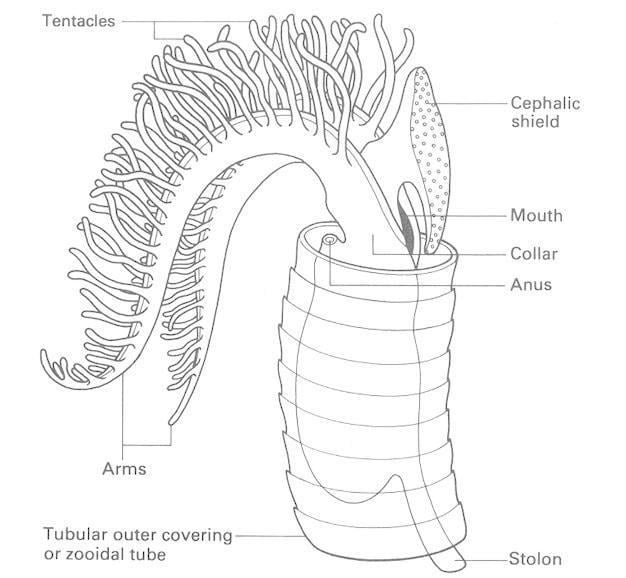 | ||
Similar Hemichordate, Acorn worm, Rhabdopleurida, Cephalodiscus, Deuterostome | ||
Pterobranchia is a clade of small worm-shaped animals. They belong to the Hemichordata, and live in secreted tubes on the ocean floor. Pterobranchia feed by filtering plankton out of the water with the help of cilia attached to tentacles. There are about 30 known living species in the group.
Contents
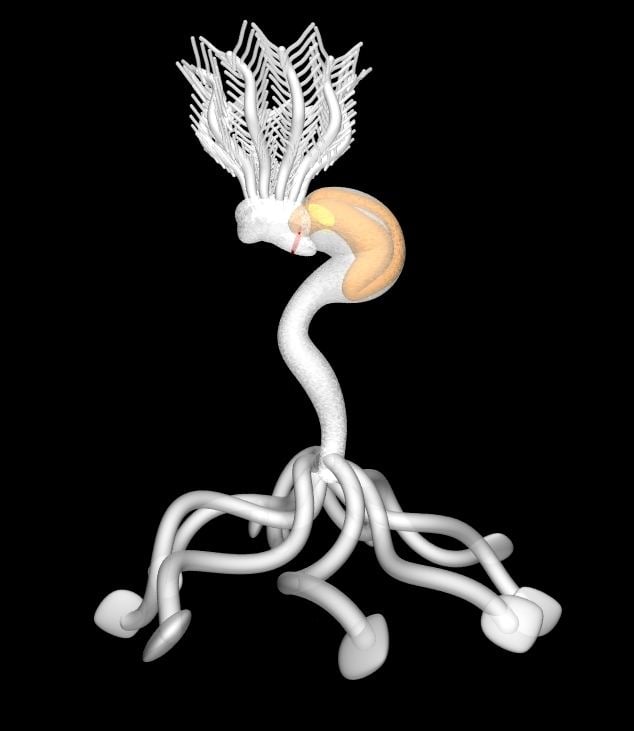
The class Pterobranchia was established by Ray Lankester in 1877. It contained, at that time, the single genus Rhabdopleura. Rhabdopleura was at first regarded as an aberrant polyzoon, but when the Challenger report on Cephalodiscus was published in 1887, it became clear that Cephalodiscus, the second genus now included in the order, had affinities in the direction of the Enteropneusta.
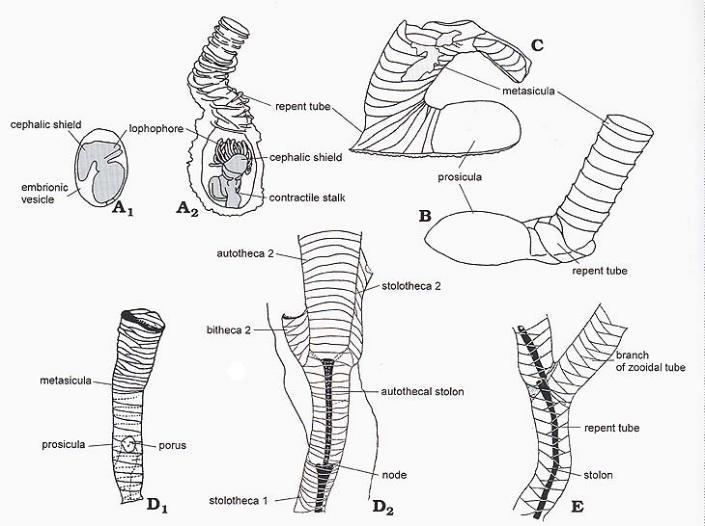
Studies under an electron microscope have suggested that pterobranchs belong to the same clade as the extinct graptolites, and phylogenetic analysis suggests that the pterobranchs are living members of the graptolite clade.
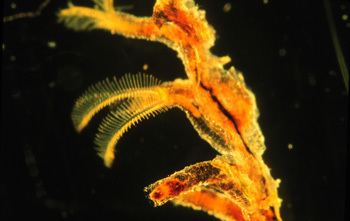
Biology
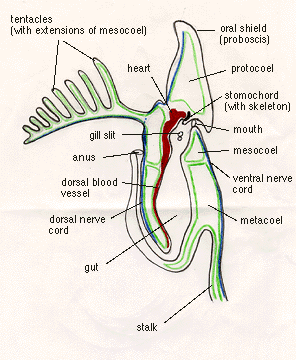
Pterobranchs are small worm-like filter-feeders, living on the ocean floor, often in relatively deep waters. Like their relatives, the acorn worms, their body is divided into three parts: an anterior proboscis, a collar, and a trunk. The proboscis is wide and flattened at the tip, and in most species contains glands that secrete a tube of organic material in which the pterobranch spends its adult life. The animals are mostly colonial, with several zooids living together in a cluster of tubes. In some species, the individual zooids within the colony are connected by stolons. The genus Atubaria is unusual in lacking the tubes typical of other pterobranchs.
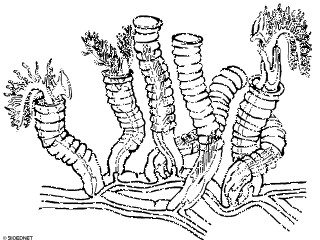
The collar bears a number of large arms, each of which includes a row of tentacles along one side. The number of arms varies between species, with anything from one to nine pairs. The tentacles are covered in cilia and aid in filtering food from the water. The trunk includes a simple tubular gut, and is curved over so that the anus projects upwards, lying dorsal to the collar. Cephalodiscus has a single pair of gill slits in the pharynx, although Rhabdopleura has none.
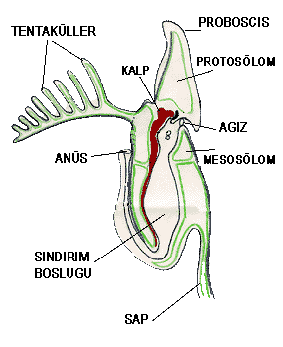
Development of pterobranchs have been studied only in Rhabdopleura from Plymouth (R. compacta) and from Bermuda (R. normani). Both of these species are dioecious, with the fertilised egg hatching to produce a free-swimming ciliated larva. Despite the close relationship between the two groups, the larva does not resemble that of the acorn worms; they are "planula-like". Eventually, the larva settles onto the substrate and metamorphoses to an adult. Alternatively, they also reproduce asexually by budding to create a new colony.
Taxonomy
The class is a small one, with only three known families, each containing a single genus.
Class Pterobranchia
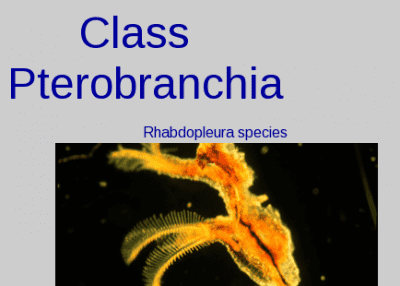
Evolution
The earliest pterobranchs, including Yuknessia and Galeaplumosus, are known from mid-Cambrian lagerstatten.
